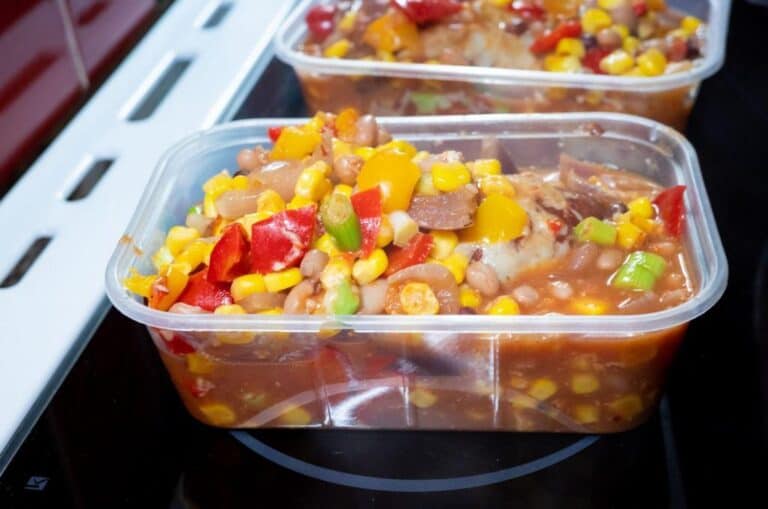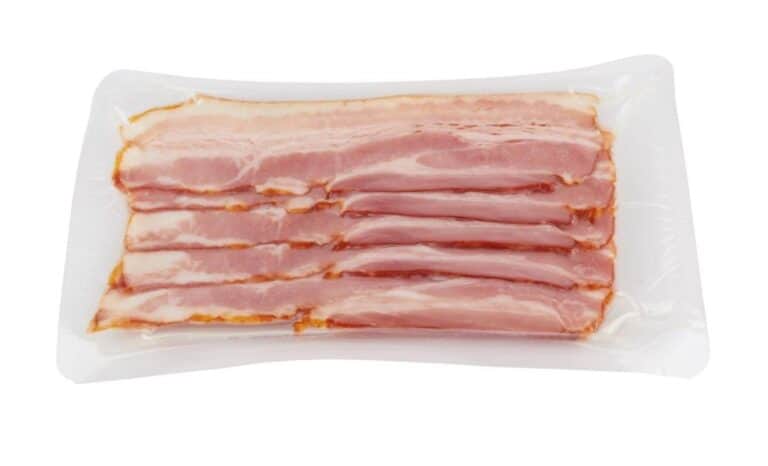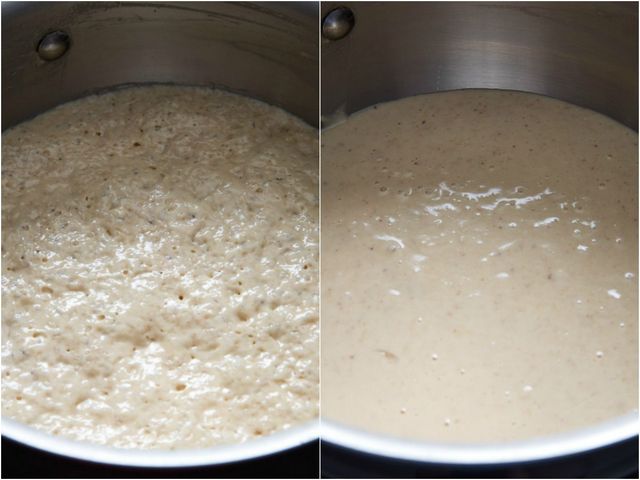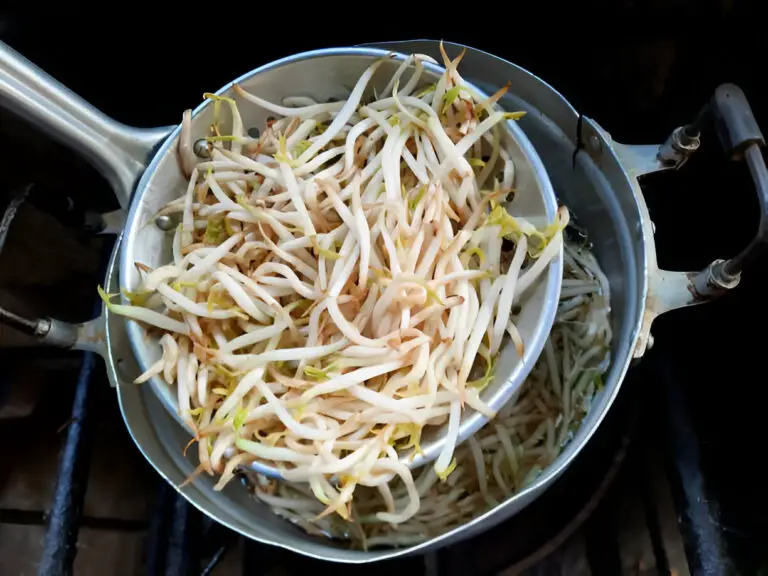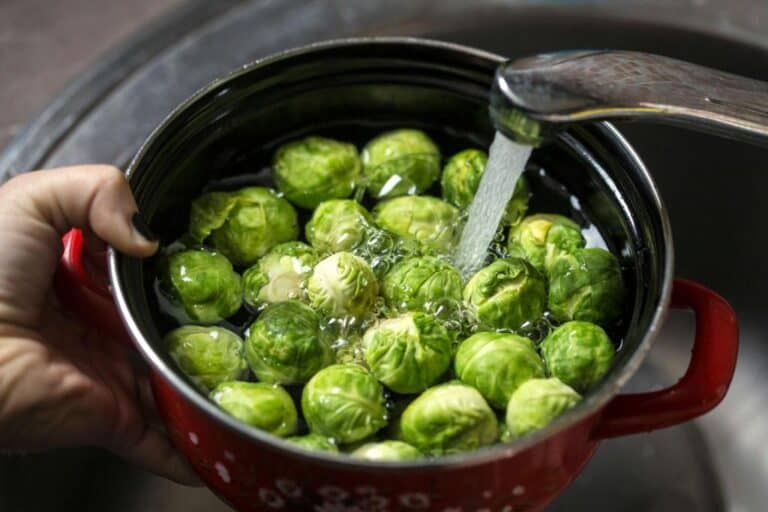Melted Plastic in the Oven – Can I Still Eat Food? (Safe or Dangerous)
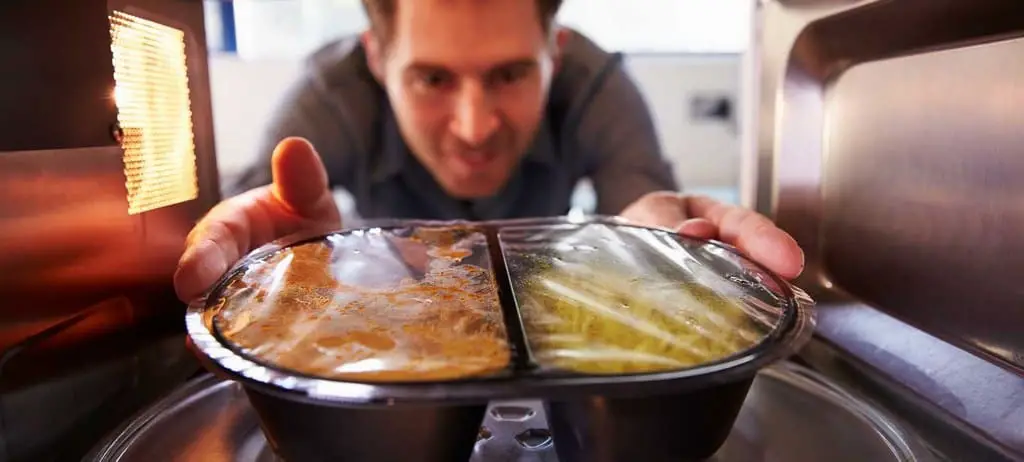
We’ve all been there. You’re in a rush to make dinner, and you forget to take the plastic wrap off the casserole dish before putting it in the oven.
Suddenly, you’re faced with a dilemma – can you still eat food that has been in contact with melted plastic? Is it safe?
The good news is that, in most cases, the answer is yes. Melted plastic is generally safe to use as long as you follow a few simple safety guidelines.
However, there are a few things you should keep in mind. First, make sure that the plastic didn’t come into contact with the food itself. If it did, it’s best to throw the food away.
In this article, we will explore how to make sure that the food in melted plastic is still edible. The important thing is to look for the food condition itself.
Melted Plastic in the Oven – Can I Still Eat Food?
If you find that there is melted plastic in your oven, you may be wondering if it is still safe to eat food that has been cooked in it. Please take the below into consideration if you want to decide whether you can still eat the food.
1. How Much Plastic Melted?
The amount of plastic that has melted will determine whether or not you can still eat the food. If there is a small amount of melted plastic, you may be able to get rid of it with a spatula and still eat the food.
However, if there is a large amount of melted plastic or if the plastic is melting, it is best to get rid of the food. This is because the fumes from the melting plastic can be harmful. If you have a self-cleaning oven, you can use this cycle to get rid of the melted plastic.
2. What Type of Plastic Melted in the Oven?
The type of plastic that melted in the oven is crucial in determining whether or not the food is still safe to eat. Not all plastics are made equal, and some may contain chemicals that can leach into food. If it’s food-grade plastic that melted, it’s generally safe to still eat the food as long as you’ve cleaned the oven and removed any plastic residue.
3. What if You Accidentally Burned Plastic in the Oven?
If you accidentally burned plastic in the oven, it’s best to get rid of the food that has been cooked in it. Burning plastics produces fumes that can be harmful to your health, and it’s not worth the risk. It’s better to be safe than sorry.
4. What if You Accidently Melted Microwave-Friendly Plastic?
If you accidentally melted microwave-friendly plastic in the oven, the same rule applies. If the plastic has melted on the food or directly on the oven rack, it’s best to discard the food. However, if the plastic has melted inside a microwave-friendly container, the risk is low, and it’s generally safe to still eat the food as long as you’ve cleaned the oven and removed any plastic residue.
Easy Step to Remove Food from Melted Plastic in Oven
You’ve just taken your food out of the oven, and you notice that there’s a piece of melted plastic on top. What do you do?
Luckily, removing food from melted plastic in the oven is relatively easy. First, make sure that the oven is turned off and cooled down. Then, use a spoon or spatula to gently remove the food from the plastic. If the plastic is accidentally stuck to the cooked food, you can try using a knife to gently scrape it off.
If you’re having trouble removing the plastic, you can always put the food back in the oven for a few minutes to soften up the plastic. Once it’s softened up, it should be easier to remove. Just be careful not to overcook your food in the process!
Does Plastic Release Toxins When Melted?
A new study has found that when plastic is melted, it releases toxins that can be harmful to humans. The study, which was conducted by researchers at the University of Texas at Austin, found that when plastic is heated to temperatures above 100 degrees Celsius, it releases toxins that can be harmful to human health.
The study’s lead author, Dr. George “Buddy” Dyson, said that the findings are concerning because many people use melted plastic for various purposes, such as in hair straighteners and curling irons. He added that the findings highlight the need for more research on the safety of using melted plastic.
So far, there is no evidence that exposure to the toxins released by melted plastic is harmful to human health. However, the findings of this study suggest that more research is needed to determine whether or not exposure to these toxins is safe.
What Should I Do if I Accidentally Burned Plastic in My Oven?
If you accidentally burn plastic in your oven, don’t panic. The following steps will help you clean up the mess and prevent it from happening again.
You’ll need to clean the oven to get rid of the plastic smell and fumes.
- First, turn off the oven and let it cool.
- Remove any burnt plastic from the oven with a spatula or knife. If there is a lot of burnt plastic, you may need to use a vacuum cleaner with a brush attachment to get all of the pieces out. If it’s stuck on, you can try using a spatula or other blunt object to gently scrape it off.
- Use a wet rag to wipe away any loose bits of plastic.
- Once the majority of the burnt plastic has been removed, you can start cleaning the oven. First, mix equal parts baking soda and water to form a paste.
- Spread the paste over the area where the plastic was burned and let it sit for 15 minutes.
- Then scrub it off with a sponge.
- Then, wipe away the paste with a damp cloth and dry the area completely.
- Congratulations, you have just cleaned your oven of melted plastic!
Can You Still Cook In An Oven After Melted Plastic?
If you’ve ever had a plastic container melt in your oven, you may be wondering if it’s safe to continue using the oven. The good news is that, in most cases, you can simply remove the melted plastic and continue using the oven as usual.
There are a few things to keep in mind, however. First, make sure to remove all of the melted plastic from the oven. If there are any small pieces remaining, they could catch fire the next time you use the oven.
Check the heating element to make sure it’s not damaged. If it is, you’ll need to replace it before using the oven again.
Overall, as long as you take a few precautions, you can use your oven even after it has melted plastic inside of it. Just be sure to clean up any mess and check for damage before firing it back up again.
The heat from the oven can help seal in flavor and nutrients, making your food more flavorful and nutritious. Plus, the plastic can act as a barrier against bacteria, keeping your food safe to eat.
At What Temperature Does Plastic Leach?
Plastics are ubiquitous in our lives, but we know relatively little about them. One thing we do know is that they can leach chemicals into food and drinks, especially when heated. But at what temperature does plastic leach?
Researchers have found that most plastics leach chemicals when heated to temperatures above 70 degrees Celsius. Some plastics, like polystyrene, leach chemicals even at room temperature.
The chemicals that leach from plastics can include hormone disruptors and carcinogens. So it’s best to avoid heated plastics altogether, if possible. When you must use them, be sure to let them cool before using them.
Oven-Friendly Plastic
Plastic is a material that is made of synthetic polymers. There are many different types of plastic, each with their own properties and uses. Some plastics are oven-friendly, while others are not.
The type of plastic that is oven-friendly will depend on the intended use of the plastic. Some plastics are designed to be heat resistant and can withstand high temperatures. Other plastics may melt or deform when exposed to heat.
When choosing a plastic container for food, it is important to check the labels to see if the plastic container is microwave-safe or oven-safe. Most oven-safe containers will have a symbol or statement indicating that they can be used in an oven. If you are unsure, it is best to err on the side of caution and choose a different type of container.
There are different types of plastic, and not all of them are oven-friendly. Polystyrene is a type of plastic that is brittle and can’t withstand high temperatures, so it’s not a good choice for using in the oven. Plastic containers made from polycarbonate are a better option for oven use, as they are more heat-resistant.
Melted Plastic in the Oven – Can I Still Eat Food? (Conclusions)
When you find melted plastic in the oven, it’s natural to wonder if your food is still safe to eat. You may also wondering what happens if you eat food with melted plastic The good news is that, in most cases, the food will be just fine.
The important thing is to check if melted plastic has come into contact with melted plastic. If there is any doubt, it is always best to err on the side of caution and throw the food away.


